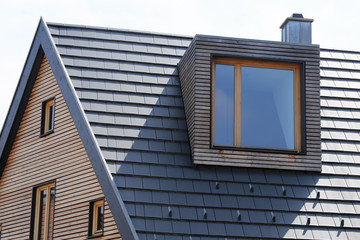Your Guide to Getting a Loft Conversion Loan
Are you considering a loft conversion and wondering how to finance it? In this guide, we will walk you through the process of getting a loft conversion loan and explore the various options available to you.
Key Takeaways:
- Before getting a loft conversion loan, consider the suitability of your house for a loft conversion, including the size, head height, and space for a staircase.
- The cost of a loft conversion can vary depending on factors such as the size, shape, and materials used, so it’s important to get multiple quotes.
- Loft conversions within your existing roof space usually do not require planning permission, but building regulation approval is necessary.
- Financing options for your loft conversion include personal loans, home loans, cash reserves, overdrafts, credit cards, and remortgaging.
- Consider the advantages and risks of each financing option, such as interest rates and possible repercussions on your home.
Factors to Consider Before Getting a Loft Conversion Loan
Before you start the process of obtaining a loan for your loft conversion, it is important to consider a few key factors that will determine the feasibility and cost of the project.
Firstly, assess the suitability of your house for a loft conversion. Factors to consider include the size of the loft conversion, the head height, and the space for a staircase. It is essential to ensure that your house has enough space and structural integrity to accommodate the conversion.
Secondly, consider the cost implications of a loft conversion. The cost can vary depending on factors such as the size and shape of your loft, the type of extension needed, the materials used, and your location. It is recommended to obtain multiple quotes from different contractors to get a clear understanding of the expected cost.
Additionally, be aware of the necessary approvals and permissions required for a loft conversion. While most loft conversions within your existing roof space do not require planning permission, it is important to check with your local authority. However, all loft conversions need building regulation approval, which covers aspects such as fire safety, structural strength, and insulation requirements.
| Key Factors to Consider | Questions to Ask |
|---|---|
| Suitability of your house | Does your house have enough space for a loft conversion? Is the head height sufficient? Is there space for a staircase? |
| Cost of the conversion | What is the estimated cost of the loft conversion? Are there any additional expenses to consider? |
| Approvals and permissions | Do you need planning permission for the loft conversion? What building regulation approval is required? |
By carefully considering these factors, you can make an informed decision about whether obtaining a loft conversion loan is the right choice for you. It is crucial to have a clear understanding of the project’s feasibility, cost, and regulatory requirements to ensure a successful and hassle-free loft conversion.
Get in touch with us
Financing Options for Loft Conversion
When it comes to financing your loft conversion, there are several options to consider, each with its own advantages and risks. Ideally, saving up the amount needed would be the best approach to avoid borrowing. However, if that is not realistic for you, there are alternative methods available.
Personal Loans
One option is to apply for a personal loan from a bank or financial institution. Personal loans are unsecured, meaning you don’t need to provide collateral. They usually have low-interest rates and repayment terms ranging from 1 to 5 years. Personal loans can be a suitable choice for smaller loft conversions, and they provide flexibility with the loan amount.
Home Loans
If you own a property, you may consider a home loan, also known as a secured loan or second mortgage. With a home loan, you can borrow money against the equity in your home. This type of loan offers larger loan amounts and longer repayment terms. However, it’s important to carefully assess the risks associated with securing debts against your home, as this could potentially lead to repossession if you fail to make the payments.
Other Financing Options
There are also alternative financing options to explore. If you have cash reserves available, using your own savings can be a cost-effective solution. Overdrafts can be a short-term financing option, but they often have low limits. Credit cards can be used for smaller expenses, and some offer interest-free periods, but they typically have higher interest rates. Additionally, you may consider remortgaging your home to borrow additional money against its value. Remortgaging can provide longer repayment terms, but it’s crucial to review the terms and potential early repayment fees.
Assessing the Options
Before making a decision, it’s important to carefully consider the advantages and risks associated with each financing option. Factors such as interest rates, repayment terms, and financial security should be taken into account. Additionally, assessing your financial situation, including your credit rating and income and outgoing expenses, will help you determine which option is most suitable for your needs.
Remember: a loft conversion can be a valuable investment that adds space and value to your home. Taking the time to evaluate the financing options available and choosing the right one for your circumstances will ensure a successful and stress-free project.
Applying for a Loft Conversion Loan
Once you have chosen the financing option that best suits your needs, it’s time to start the process of applying for a loft conversion loan. This step-by-step guide will help you navigate through the application process smoothly.
- Research and compare lenders: Start by researching different lenders that offer loft conversion loans. Look for reputable lenders with competitive interest rates and favorable terms. Compare their offerings and choose the one that best matches your requirements.
- Gather necessary documentation: Before applying, gather all the necessary documentation that the lender may require. This may include proof of income, bank statements, identification documents, and details about your property.
- Submit your application: Fill out the loan application form accurately and submit it to the chosen lender. Ensure that you provide all the required information and double-check for any errors or omissions.
- Wait for approval: Once your application is submitted, the lender will review it and assess your eligibility. The approval process may take some time, so be patient and prepared to provide any additional information or documents if requested.
Summary
Applying for a loft conversion loan involves researching and comparing lenders, gathering necessary documentation, submitting your application, and waiting for approval. It is important to carefully review the terms and conditions of the loan before signing any agreements. Remember to consider your financial situation and choose a loan that you can comfortably repay. With a well-prepared application and careful consideration, you can secure the financing you need to turn your loft conversion dreams into reality.
| Step | Description |
|---|---|
| 1 | Research and compare lenders |
| 2 | Gather necessary documentation |
| 3 | Submit your application |
| 4 | Wait for approval |
Get in touch with us
Eligibility and Requirements for a Loft Conversion Loan
Before you apply for a loft conversion loan, it is important to understand the eligibility criteria and requirements set by lenders. These criteria may vary depending on the lender, but there are some common factors that you should be aware of.
Firstly, your credit rating will play a significant role in determining your eligibility for a loan. Lenders will assess your credit history to determine whether you have a good track record of repaying debts and managing your finances responsibly. They will also consider your income and outgoing expenses to ensure that you can afford the loan repayments.
Another important requirement is the value of your property. Lenders will typically require your property to have sufficient equity to secure the loan. This means that the value of your property must be higher than the loan amount you are requesting. If your property is already heavily mortgaged, you may face difficulties in obtaining a loft conversion loan.
In addition to these criteria, lenders may also have specific requirements in terms of the type of loft conversion you plan to undertake. They may have restrictions on the size or style of the conversion, or they may require certain building regulations to be met. It is important to check with your lender to ensure that your planned loft conversion meets their requirements.
| Eligibility Criteria | Requirements |
|---|---|
| Credit Rating | A good credit history and responsible financial management |
| Income and Expenses | Ability to afford loan repayments |
| Property Value | Sufficient equity to secure the loan |
| Specific Loft Conversion Requirements | Compliance with building regulations and lender’s restrictions |
Before proceeding with a loft conversion loan application, it is advisable to review your eligibility against these criteria and ensure that you meet the requirements set by lenders. This will help increase your chances of securing a loan and give you a clear understanding of what is expected from you throughout the loan process.
Conclusion
Financing your loft conversion is a crucial step in turning your loft vision into reality. By exploring the various options available and understanding the requirements, you can make an informed decision that suits your needs and financial situation.
Before getting a loft conversion loan, consider the suitability of your house for a loft conversion. Factors to consider include the size of the loft conversion, the head height, and the space for a staircase. It is important to check with your local authority for any necessary planning permissions and building regulations.
When it comes to financing your loft conversion, saving up the required amount is the ideal scenario. However, if that is not feasible, personal loans and home loans are viable options. Personal loans from banks offer low-interest rates and flexibility in repayment, while home loans allow you to borrow against the equity in your home. Consider the risks of securing debts against your home before making a decision.
Other financing options to consider include using cash reserves, overdrafts, credit cards, and remortgaging your home. Each option has its advantages and risks, so it is important to carefully assess your financial situation and choose the option that best suits your needs.
Ultimately, a loft conversion can add value to your home and provide additional living space. By carefully considering your financing options and planning your project, you can embark on this exciting journey with confidence and turn your loft into a functional and beautiful space.
FAQ
Q: What factors should I consider before getting a loft conversion loan?
A: Before obtaining a loft conversion loan, you should consider the suitability of your house for a loft conversion, including factors like the size of the loft conversion, head height, and space for a staircase. It’s also important to assess the cost of the conversion and obtain multiple quotes before proceeding.
Q: Do I need planning permission for a loft conversion?
A: In most cases, loft conversions within your existing roof space do not require planning permission. However, it’s essential to check with your local authority to confirm whether you need any permits or approvals. All loft conversions, irrespective of planning permission, need building regulation approval that covers aspects like fire safety, structural strength, and insulation.
Q: What are the financing options for a loft conversion?
A: When it comes to financing a loft conversion, you have various options to consider. Personal loans can be obtained from banks with low-interest rates and offer flexibility. Home loans, also known as secured loans, allow you to borrow against the equity in your home, potentially offering larger loan amounts and longer repayment terms. Other options include using cash reserves, overdrafts, credit cards, or remortgaging your home.
Q: What are the advantages and risks of each financing option?
A: Using your own savings or securing a loan can provide financial security and flexibility. However, credit cards and remortgaging often come with higher interest rates and potential risks, such as repossession. It’s crucial to assess your financial situation and consider your credit rating, income, and expenses before pursuing any financing option.
Q: How do I apply for a loft conversion loan?
A: Applying for a loft conversion loan involves finding a suitable lender, gathering the necessary documentation, and navigating the application process. It’s important to research and compare different lenders to find the best terms and rates for your needs.
Q: What are the eligibility requirements for a loft conversion loan?
A: The eligibility criteria for a loft conversion loan can vary depending on the lender. Factors considered typically include your credit rating, income, and expenses. It’s essential to review the specific requirements set by lenders to determine if you qualify for a loft conversion loan.




